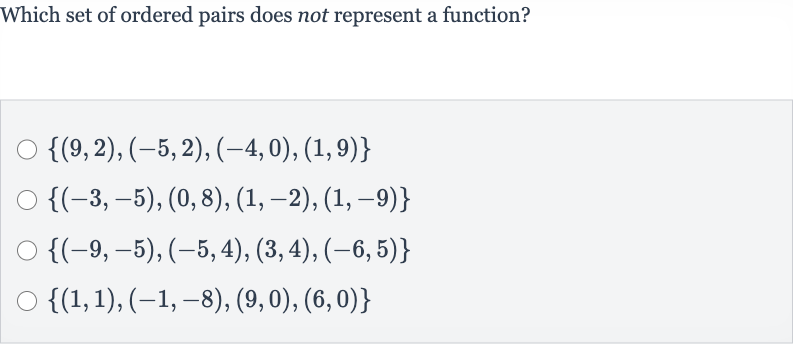Full solution
Q. Which set of ordered pairs does not represent a function?
- Define function as relation: A function is defined as a relation where each input ( extit{x}-value) has exactly one output ( extit{y}-value). To determine which set of ordered pairs does not represent a function, we need to check if there are any repeated extit{x}-values with different extit{y}-values in each set.
- Check first set: Check the first set: In this set, all -values are unique. Therefore, this set represents a function.
- Check second set: Check the second set: In this set, the x-value appears twice with two different y-values and ). This violates the definition of a function.
- Identify non-function set: Since we have found a set that does not represent a function, we do not need to check the remaining sets. The second set is the answer to the question prompt.
More problems from Write a quadratic function from its x-intercepts and another point
QuestionGet tutor help
QuestionGet tutor help
QuestionGet tutor help
QuestionGet tutor help
QuestionGet tutor help
QuestionGet tutor help
QuestionGet tutor help
QuestionGet tutor help

